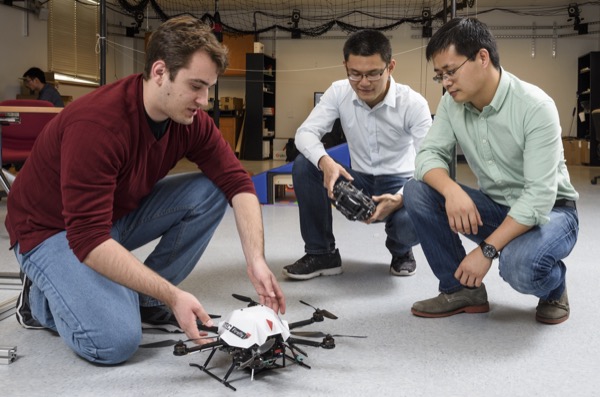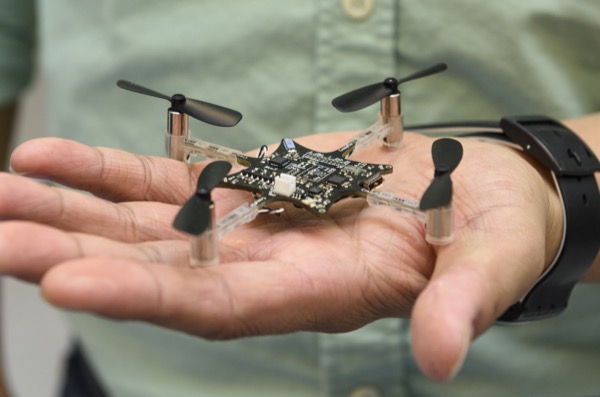


Droning on
NSF grant supports design of attack-resilient micro aerial vehicles
9:18 a.m., April 15, 2016--Drones are seeing increased use in a wide array of applications, including delivery and inspection services, aerial photography, mapping and surveying, and search and rescue missions.
Integrating these unmanned aircraft systems, known more technically as micro aerial vehicles (MAVs), is expected to have a significant economic impact, with a predicted investment of $91 billion over the next decade.
Research Stories
Chronic wounds
Prof. Heck's legacy
“It is conceivable that hundreds of thousands of MAVs will be tearing across the sky every day largely under their own automated control,” says Guoquan Huang, assistant professor of mechanical engineering at the University of Delaware.
“Each of these vehicles, however, could be hijacked or deliberately controlled for malicious purposes, exposing us to unprecedented vulnerabilities.”
Huang was recently awarded a two-year grant from the National Science Foundation to design resource-aware, attack-resilient, consistent MAV navigation.
The $166,000 award will enable Huang, whose expertise lies in robotics, to develop consistent state estimation algorithms that will allow drones to detect abnormalities in their sensing and react to them to compensate for malicious attacks.
Disrupted drone navigation has both economic and security implications.
“The Department of Homeland Security is particularly interested in this issue because drones are so ubiquitous,” Huang says.
He emphasizes that his work focuses on protecting the sensing systems that drive navigation — not on the communication systems embedded in MAVs. While other researchers are addressing communication vulnerabilities, he says, little to no attention has focused on securing MAV navigation.
“As MAVs become integral to our economy and national security, we face ever more frequent and threatening attacks,” Huang says. “By enabling secure MAV navigation in the presence of malicious attacks, this research will add one more layer of protection to our society.”
In addition, the research will foster novel MAV-based applications, such as providing aerial transportation during humanitarian aid and delivering supplies in hard-to-reach areas during and after disasters.
The project will also create research opportunities for both graduate and undergraduate students from UD, and an integrated outreach program will provide innovative hands-on teaching and learning of robotics programming for K-12 students.
About the award
The grant (“Secure Consistent MAV Navigation,” award No. 1566129) was awarded through NSF’s Computer and Information Science and Engineering (CISE) Research Initiation Initiative (CRII), a program aimed at facilitating career development in junior faculty. The program lays the groundwork for awardees to apply for the NSF Faculty Early Career Development Award at the completion of the CRII grant.
Huang’s research will contribute to the theory of stochastic estimation and control and the theory of sparse and convex optimization while also fostering further study on secure and consistent state estimation in robotics.
About the professor
Guoquan Huang is an assistant professor in the Department of Mechanical Engineering with a secondary appointment in the Department of Electrical and Computer Engineering. He joined the UD faculty in September 2014.
Huang’s research interests include robotics, computer vision and robot learning, with special emphasis on probabilistic perception, estimation, and control of autonomous ground, aerial, and underwater vehicles.
Article by Diane Kukich
Photos by Kathy F. Atkinson









